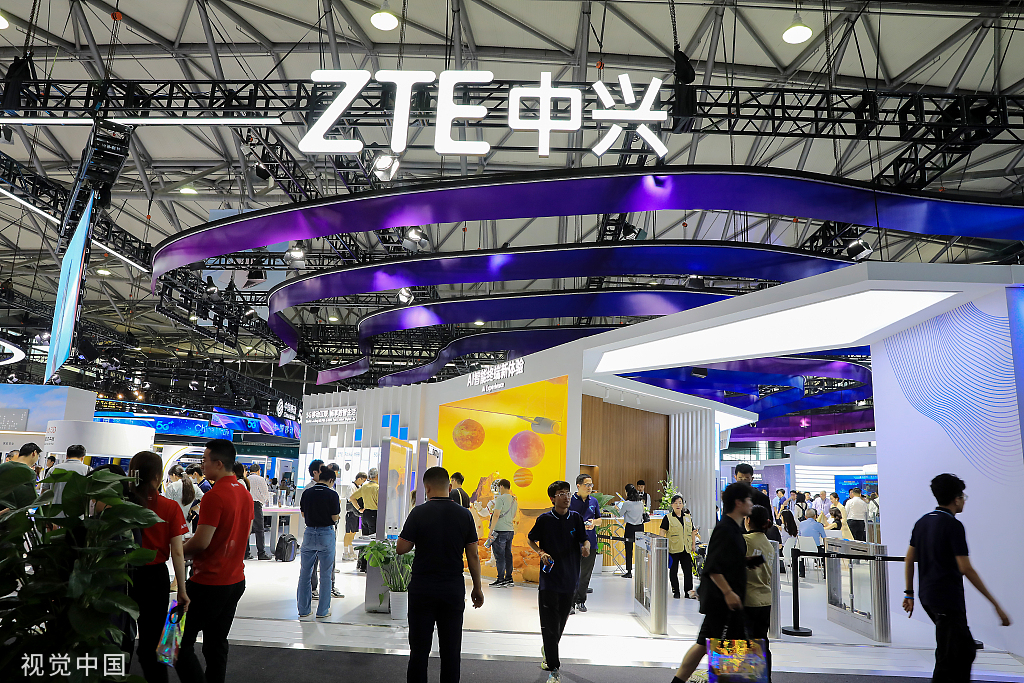Smart Home
ZTE sees demand for fixed broadband and smart home solutions while 5G lags
According to a senior executive, ZTE Corp has seen “tremendous” opportunities due to the increased demand for high-speed internet and smart home solutions globally following the COVID-19 pandemic. That’s despite a slower-than-expected development of 5G outside of China.
“Deployment of 5G technology in overseas markets has been slower than what we previously thought and investments in the field have also lagged behind,” said Chen Zhiping, vice-president of ZTE Corp.
“However, we have seen rapid growth of two sectors in our business – fixed broadband and home network solutions – internationally, especially in the Latin American market.”

The COVID-19 pandemic has pushed up demand for these two types of businesses, as people who were confined to their homes became more reliant on high-speed internet connections and home automation, she said.
“We are actively promoting these two areas of business in Latin America. Besides, the Asia-Pacific region is also where we put great focus on, such as Indonesia, Malaysia and Thailand, as the region has a huge demand for network convergence, network modernization and digitalization,” Chen said.
The Asia-Pacific region is a market from which the company generates most of its overseas revenue, she added.
ZTE posted 60.7 billion yuan ($8.36 billion) in operating revenue in the first half of the year, up 1.5 percent from the year-ago period, according to its interim results announced on Aug 18. Of the total, 17.6 billion yuan, or 29 percent, came from international markets.
Net profit grew 19.9 percent on a yearly basis to 5.47 billion yuan.
“Exploring the domestic market is far from enough for a technology company, whether it is research and development or marketing. We have been committed to the international markets and promoting the globalization of research and development, supply chain and collaboration all along,” she said.
Chen acknowledged that factors such as geopolitical tensions, economic slowdown and a deteriorating business environment in some countries have posed serious challenges to ZTE‘s operations in overseas markets. She stressed that the company had established a sound system of management as well as risk identification and control to deal with potential risks.
On November 225, 2022, the Federal Communications Commission (FCC) voted unanimously to ban U.S. sales of new Chinese telecommunications equipment and devices produced by Huawei and ZTE—as well as to restrict the use of other Chinese-made video surveillance equipment—over national security concerns. The Chinese companies have denied the allegations.
According to a report by German market intelligence platform Statista, the global ICT market is expected to reach $6 trillion in 2023, up from $5.5 trillion last year. China would rank third in global market share with over 11%, following the United States and European Union (EU).
References:
https://www.chinadaily.com.cn/a/202309/02/WS64f26e23a310d2dce4bb384f.html
Vodafone Idea (Vi) to launch 5G services “soon;” Awards optical network equipment contract to ZTE
FCC bans Huawei, ZTE, China based connected camera and 2-way radio makers
IDC: European smart home device shipments up 23.8% in Q2-2021
“This was the second quarter in a row in which the smart home market in Europe grew more than 20%, which is a sign of the recovery from the worst performance in the first half of 2020,” said Antonio Arantes, senior research analyst for smart home devices in Western Europe. “Amazon and Google regained the top two places in the market due to the good performance of the smart speaker and digital media adapter products.”
“In the second quarter of 2021, the total smart home device market grew by 29.1% in Central and Eastern Europe,” said Jan Prenosil, senior research analyst for smart home devices in Central and Eastern Europe (CEE). “The lighting product category recorded the largest growth in the quarter, and there were good results for the home monitoring and security category. But video entertainment is still in first place in terms of units in CEE.”
The smart home market is expected to reach more than 203 million units in 2025 in Europe — a compound annual growth rate (CAGR) of 13.5% from 2021 to 2025.
Category Highlights:
Video entertainment devices shipped 11.9 million units to Europe in the second quarter of 2021, accounting for 49.2% market share. Smart TVs had another stellar quarter, growing 18.7% year over year and reaching 70.4% of the video entertainment category.
Smart speakers grew 22.8% year over year, reaching more than 5.6 million units. Smart displays continue to see stronger growth than standard smart speakers.
Home monitoring/security, lighting, and thermostats grew 39.5% year over year. The three categories combined are expected to account for 65 million shipments in 2025.
About IDC Trackers:
IDC Tracker products provide accurate and timely market size, vendor share, and forecasts for hundreds of technology markets from more than 100 countries around the globe. Using proprietary tools and research processes, IDC’s Trackers are updated on a semiannual, quarterly, and monthly basis. Tracker results are delivered to clients in user-friendly Excel deliverables and online query tools.


